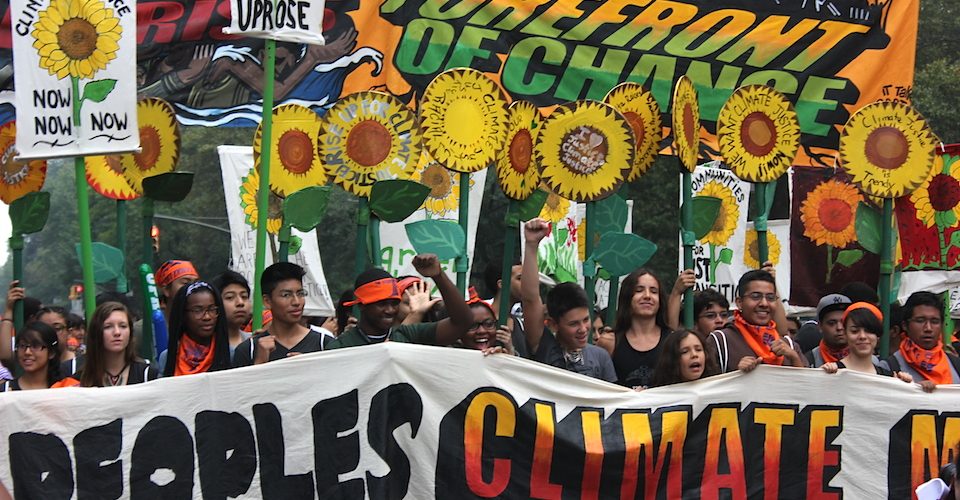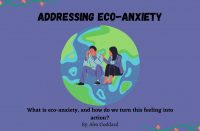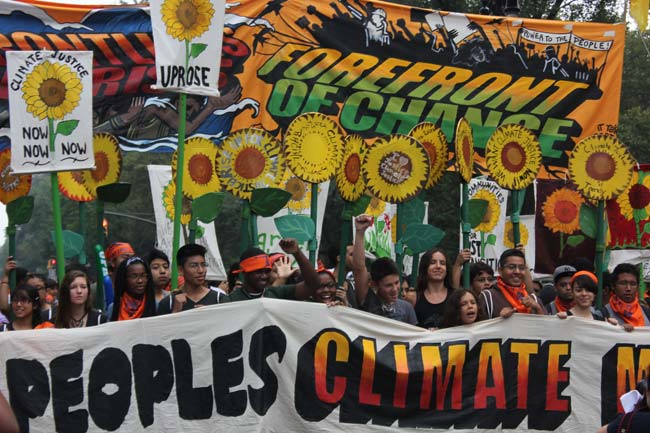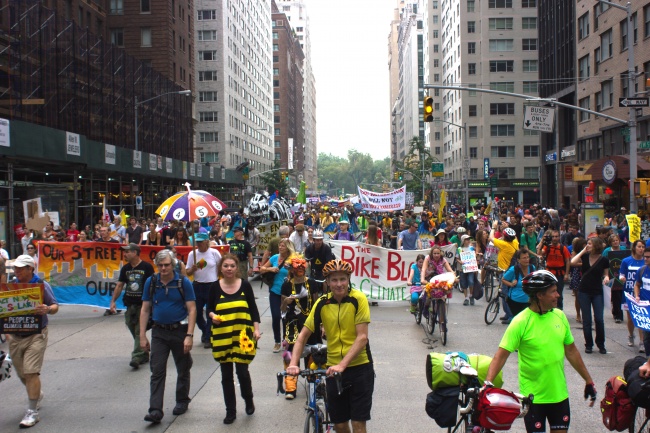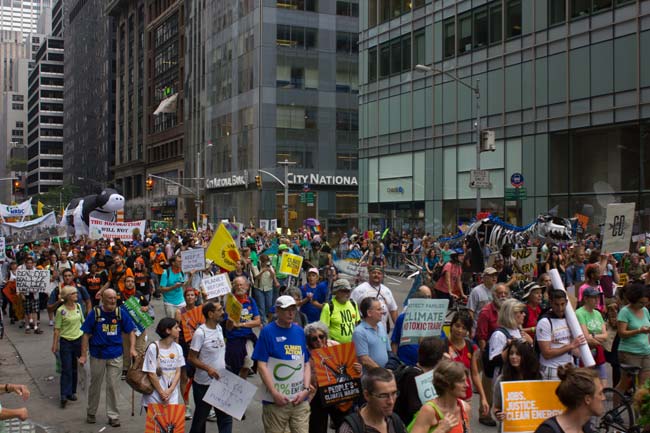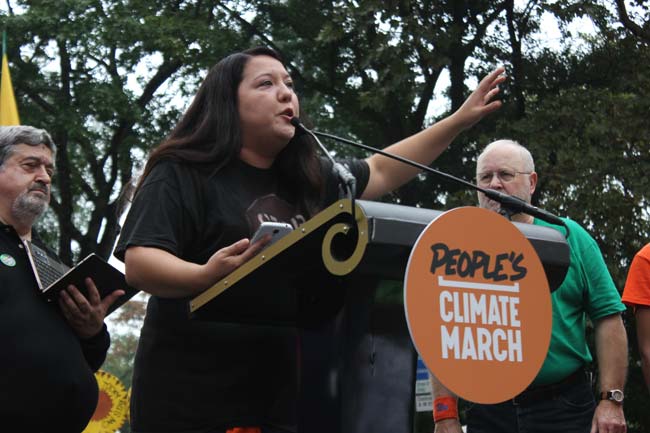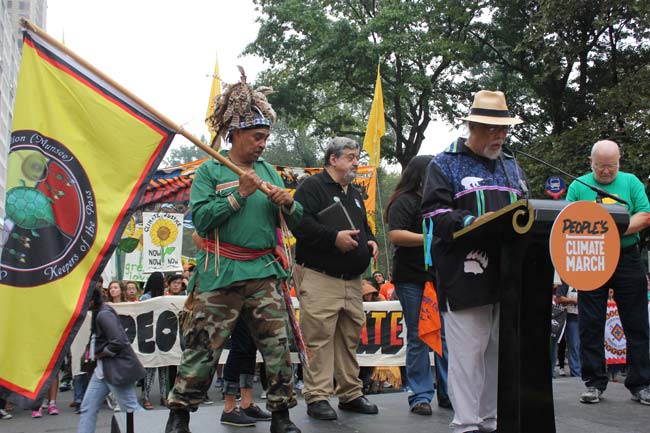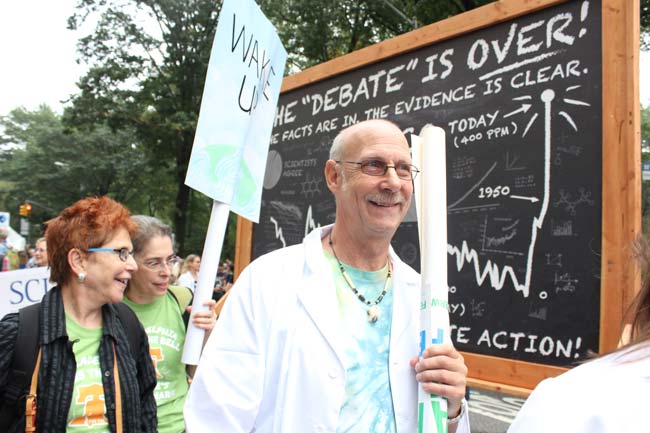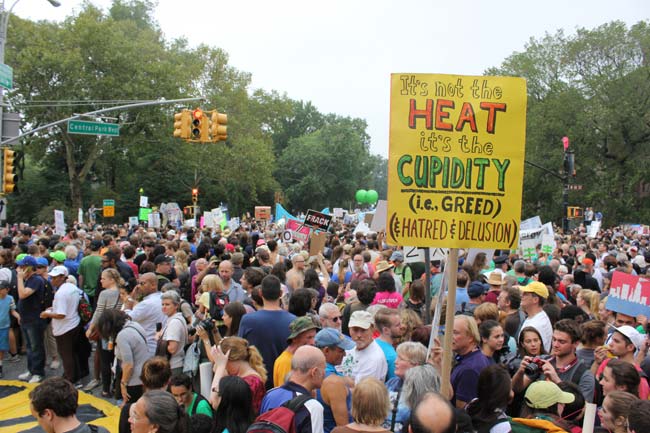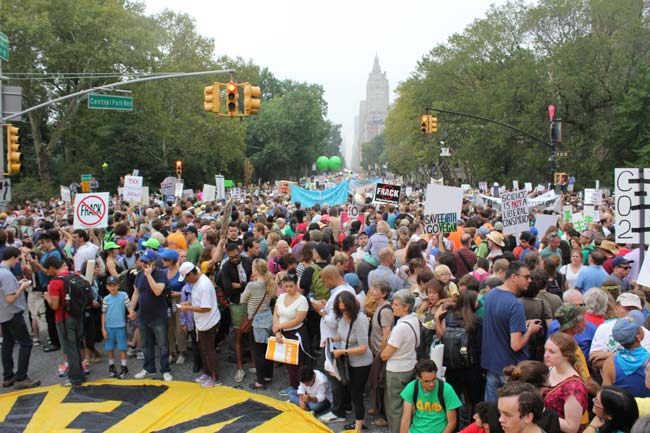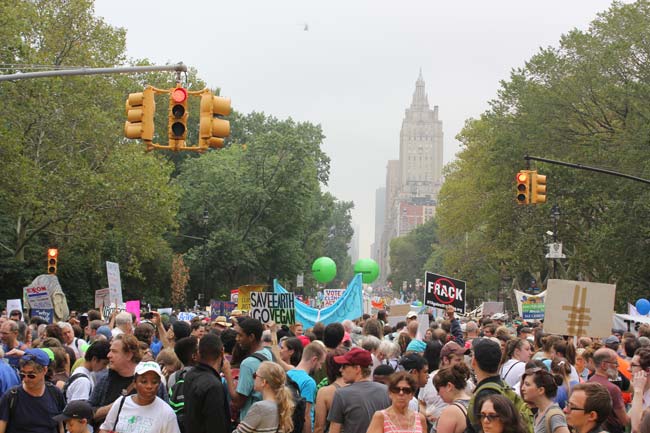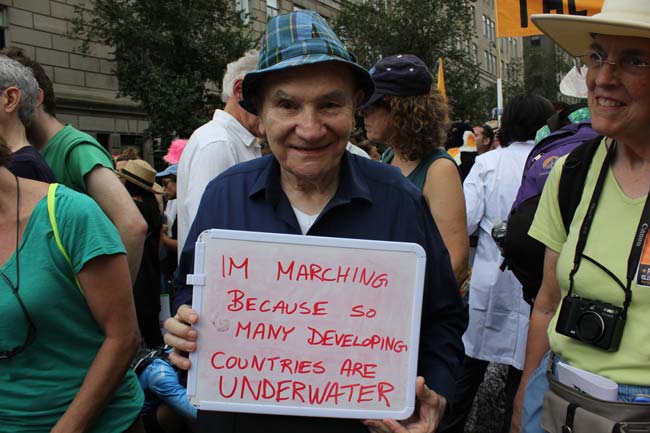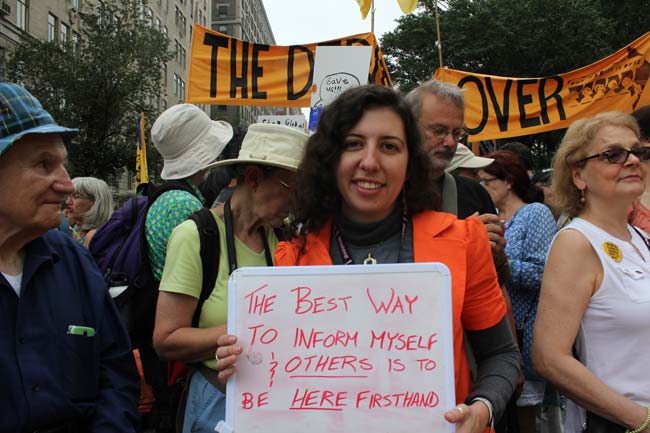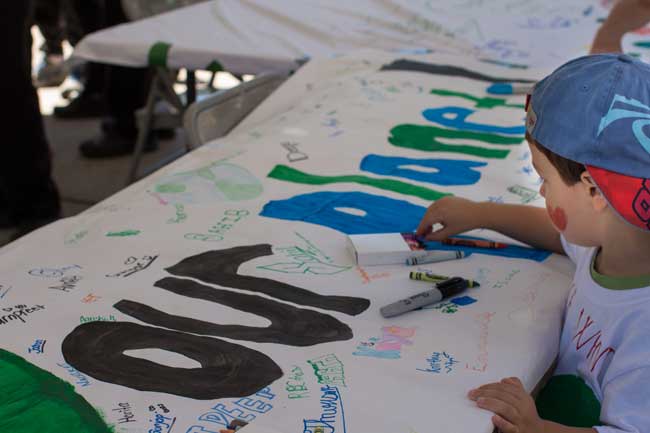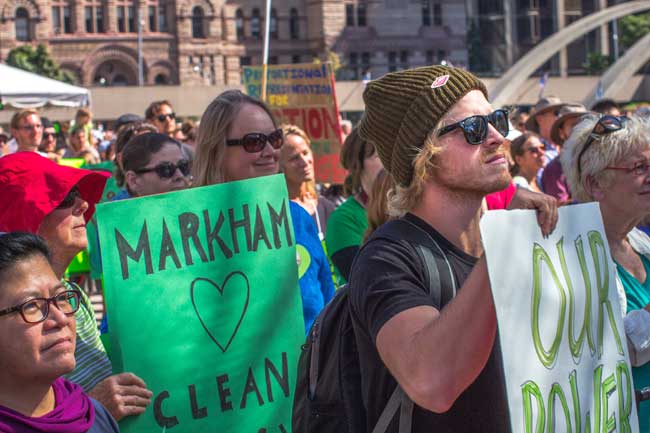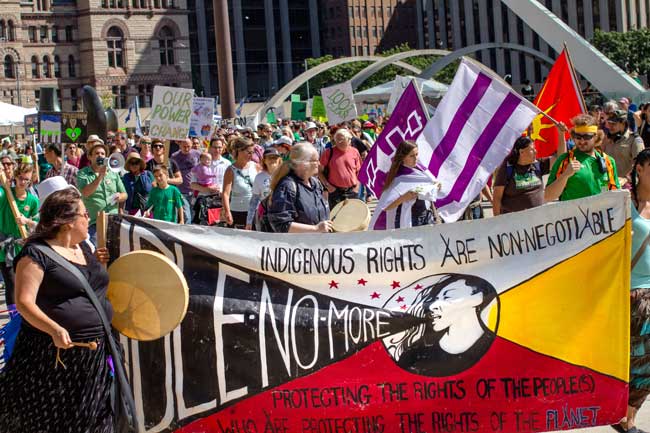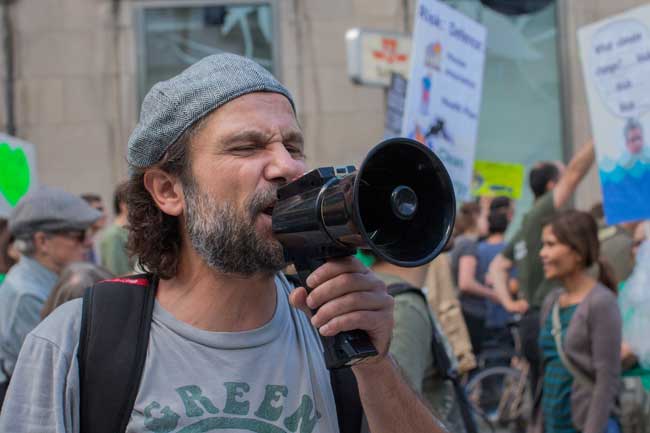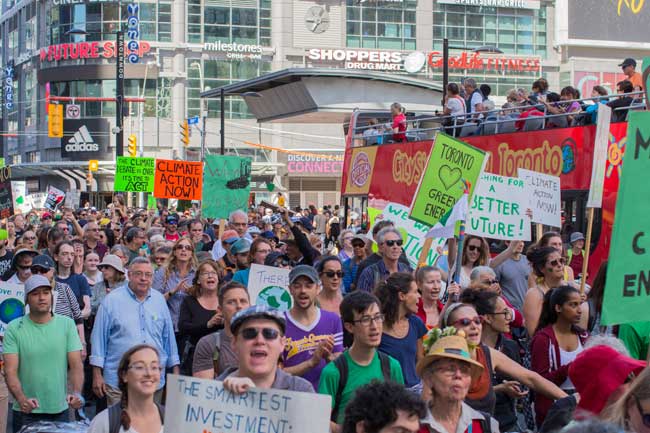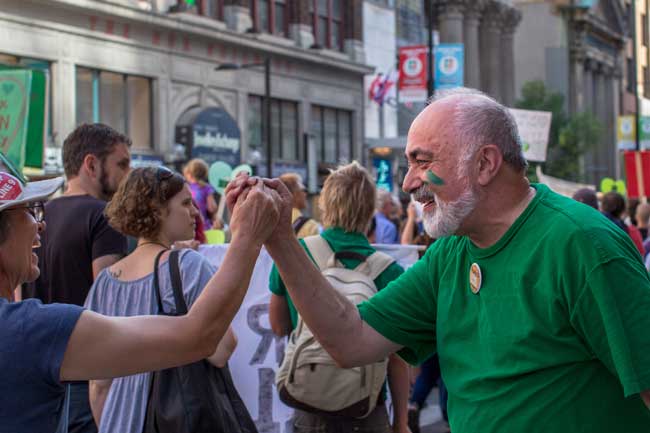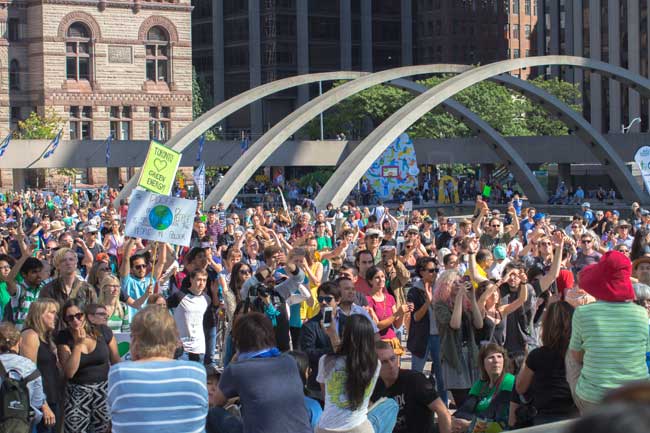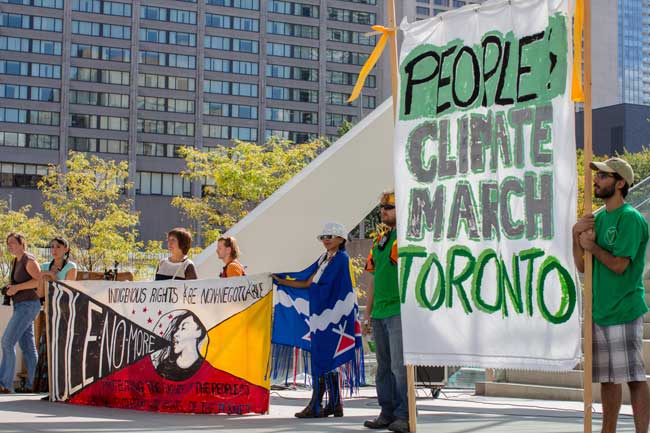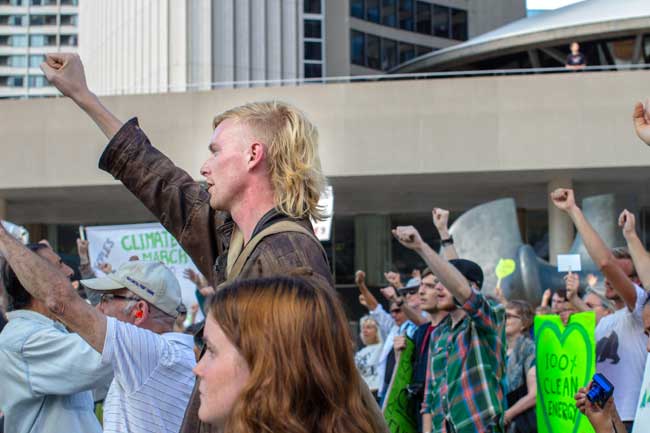New York
Amanda Hunter
Being on the ground at the New York City People’s Climate March was an experience of a lifetime.
New York
Amanda Hunter
Being on the ground at the New York City People’s Climate March was an experience of a lifetime.
There were well over 300,000 people in attendance, and one unable to attend might ask, “what does that even look/feel like?” The answer can be found within the roar of the crowd. Cheering that would start at one end of the march and ignite through the masses, building momentum down the streets of New York. Not only could you hear the sound wave approaching, passing over each of the 6 different sections of the march with startling power, but you could also feel it: rumbling in the ground and in your chest as the vibrations of that many people making noise passed over you. The expression “excitement was in the air” falls incredibly short of how much energy, enthusiasm and especially hope could be felt along more than 80 blocks of downtown Manhattan.
The march itself took place prior to the UN Climate Summit called for by UN Secretary General Ban Ki-Moon. It allowed a space for the Climate Change dialogue to grow, where people could voice their legitimate concerns for the environment, varying from local to nationwide issues. Despite varying opinions, priorities, and suggested solutions, this dialogue has emerged from the fringes and become far more mainstream than it ever was before. This discussion, and the opportunity to affect change, can be shared with everyone, and this was one of the major accomplishments of the PCM.
The days leading up to the march consisted of many activities catering to all types of global citizens. We arrived by bus a day early, in thanks to the Toronto350 contingent (a power-house of volunteers concerned about the future of the planet, with a focus on climate change in and around the City of Toronto). More than 500 Canadians who came to New York for this event! Their reasons for being there varied from, “Canada has a bad reputation in the global environmental community, and we need to be present to counterbalance this,” to “I want to share my story with like-minded people,” to “I am outraged and want to scream and shout! Fracking needs to stop immediately!” A number of banners indicated that Canadians do not support the pipeline expansions the Harper Government is supporting. In general, many were hoping to express that Canada needs climate action.
In a city that never sleeps, it was easy to fill the Saturday before the march with opportunities to become informed about virtually any scientific, economic or political environmental topic of interest. There were performances, meditations, site trips, meet-ups, panel discussions and documentary viewings. This social and educational infrastructure surrounding the Climate March made any participation far more accessible and meaningful. Typical personal fears such as, “but I don’t know enough about these issues to even begin to partake” were quickly swept away as a feeling of goodwill and the desire to inform and network was inescapably everywhere. I myself attended a meet-up on fossil fuel divestment, which was one of the most popular topics of discussion throughout the weekend.
During the march I found myself in the section called “The Debate is Over,” where scientists and academics were gathered in lab coats standing behind the truth that climate change is a real issue that must be dealt with promptly. They shared their areas of expertise with spectators and fellow marchers alike.
Being within this colossal, non-violent, record breaking climate march was absolutely breathtaking and created huge momentum for the Climate Action Movement. Canadians will undoubtedly come back invigorated and excited, and will apply that energy to their local issues in the coming months. People are letting go of the idea that because they’re just one person, they cannot make an impact. Like the roaring cheers of the People’s Climate March uniting 300,000-plus people, more and more people are feeling that they are united within a global community which has a voice that is growing louder every day.
Photos by Amanda Hunter, unless otherwise specified.
Elli Levene
Thousands of environmentalists and activists also gathered at Toronto’s Nathan Phillips Square to raise their voices for a clean future. Yonge Street and Queen Street West were flooded with marchers demanding political and social environmental change. Cars honked in response to the marchers’ chants and signs advocating for green energy. Authors, activists and Indigenous people spoke, urging everyone to come together to save our planet. Add Toronto’s thousands to the hundreds of thousands in New York and other marches around the world, and it’s clear the climate movement is large and loud enough that it can no longer be ignored.
Photos by Elli Levene.
{C}
Amanda is a graduate of Fleming College’s Environmental Visual Communications program.
Elli is a part of Fleming College’s 2014 Environmental Visual Communications program, taught at the ROM in downtown Toronto and holds an Honours Bachelor of Science in Environmental Science and Resources from Trent University. He values time spent with family, friends and nature and seeks to inspire his viewers in understanding the importance of community.


